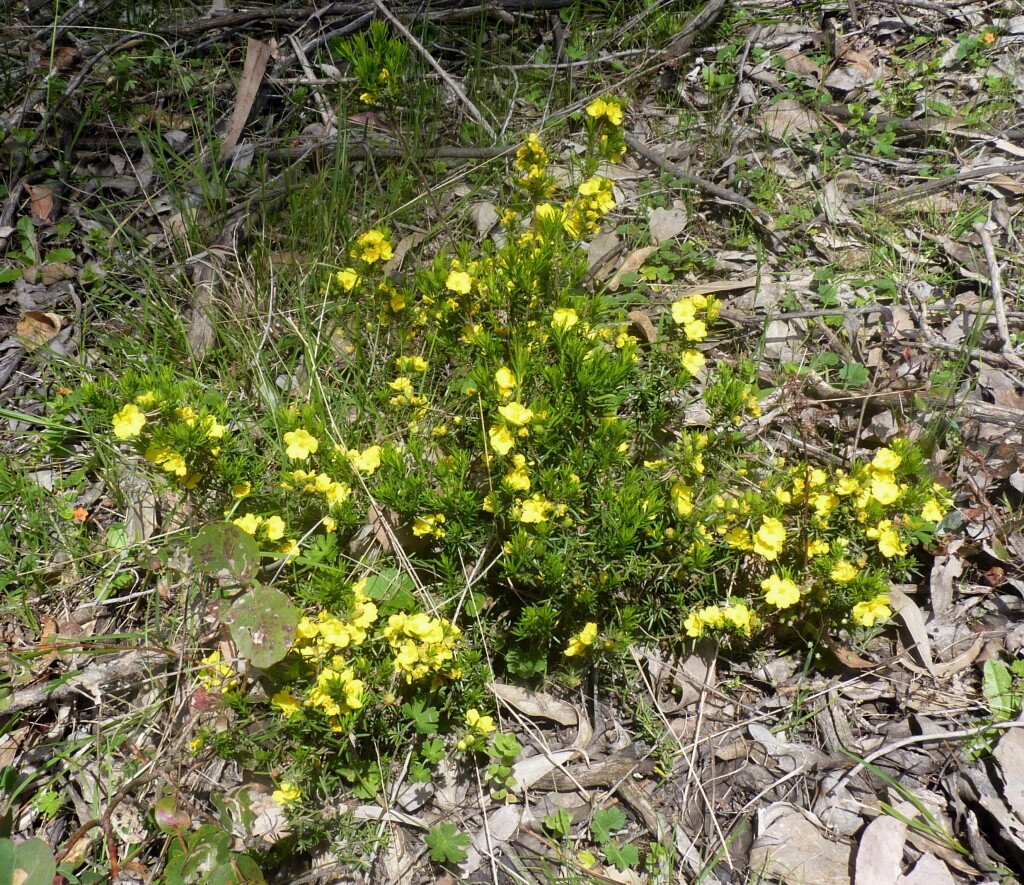Hibbertia strigosa
ToelkenErect to spreading shrubs to 50 cm high; branches stellate-tomentose. Vestiture of short, few-branched stellate hairs, usually tubercle-based, rarely with a few longer simple or bifurcate hairs. Leaves linear, rarely linear-lanceolate, (5.4–)10–16(–23) mm long, (0.6–)0.8–1.2(–1.4) mm wide, acute, with central ridge continued into apex; upper surface with scattered antrorse-appressed, few-branched stellate hairs; petiole 0.2–0.6 mm long; margins broad, revolute, recessed to flush with or slightly raised above and touching the broader, ± glabrous or stellate-hairy, central ridge below. Flowers sessile, terminal on long and short shoots, subtended by 1 linear-triangular, leaf like bract with revolute margins, 3.6–4.4 mm long; sepals (6.8–)7–9(–9.2) mm long, subequal, puberulous to tomentose; petals broadly obovate, 9–11.8 mm long, yellow; stamens (9–)12–14(–16) in one cluster; filaments free to slightly connate basally; carpels 2, tomentose. Flowers Oct.–Dec.
CVU, NIS. Also NSW. Occurs in open woodland, usually on sandy soils on the northern slopes of the Great Dividing Range (i.e. Pine Mountain, Tallangatta, Chiltern, Beechworth, King Valley, Mount Samaria).
This species was previously included in H. calycina, from which it differs in the lack of simple hairs on stems (aside from tufts of hair associated with leaf axils), and the longer sepals (more than 7 mm long). Plants may also resemble members of the H. riparia complex, but are distinguished from that complex by the vestiture of antrorse hairs on leaves and sepals, and the more prominently acute leaf apex.
 Spinning
Spinning